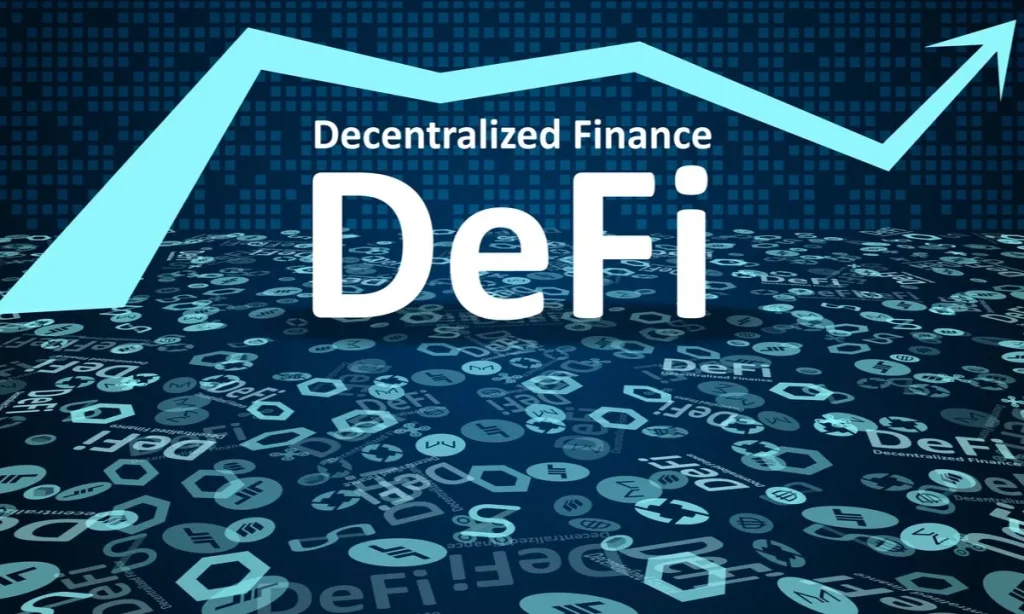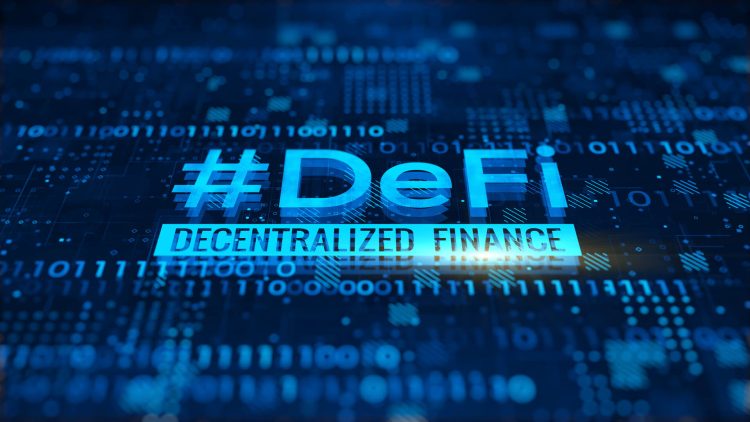Introduction
In recent years, the rise of Decentralized Finance (DeFi) has generated widespread excitement and speculation about its potential to disrupt and transform the financial landscape. Built on the foundation of blockchain technology, DeFi aims to offer financial services such as lending, borrowing, insurance, trading, and asset management without the need for traditional intermediaries like banks. This shift towards peer-to-peer financial systems has the potential to challenge the long-standing dominance of centralized financial institutions.
However, while DeFi has made remarkable strides and offers a range of innovative services, the question remains: Can DeFi really replace the traditional banking system, or is it simply a complementary alternative?
In this article, we will explore the key components of DeFi, its advantages and disadvantages, and the challenges it faces in its quest to compete with traditional banking systems.
What is DeFi? A Brief Overview
Decentralized Finance (DeFi) refers to a set of financial services that are built on blockchain technology, primarily on platforms like Ethereum. The key principle of DeFi is to replace the centralized intermediaries in traditional finance—such as banks, brokers, and insurance companies—with smart contracts and decentralized protocols. These smart contracts are self-executing contracts where the terms of the agreement are directly written into code, eliminating the need for a trusted third party.
Key features of DeFi include:
- Smart Contracts: These are autonomous digital agreements that execute automatically when pre-set conditions are met, ensuring trust and transparency without the need for intermediaries.
- Decentralized Exchanges (DEXs): Platforms where users can trade cryptocurrencies directly with one another, without relying on a centralized exchange like Binance or Coinbase.
- Lending & Borrowing: DeFi protocols allow users to lend their assets for interest or borrow funds by using collateral, often with better terms than traditional banks.
- Staking & Yield Farming: Users can lock up their cryptocurrency in various DeFi protocols to earn rewards, effectively earning interest or dividends.
- Synthetic Assets: Derivatives and assets that represent real-world assets (like stocks, commodities, or fiat currencies) but are created on the blockchain.
Advantages of DeFi Over Traditional Banking
1. Elimination of Intermediaries
One of the most compelling aspects of DeFi is that it eliminates the need for centralized intermediaries like banks, brokers, and insurance companies. In traditional banking, intermediaries charge fees for their services, which can add up significantly over time. DeFi platforms, on the other hand, allow users to transact directly with one another, using smart contracts to execute transactions in a secure and automated way. This peer-to-peer (P2P) nature reduces the reliance on central authorities, potentially lowering costs for users.
- Example: A user can lend or borrow money directly from another individual through a DeFi lending platform like Aave or Compound, bypassing traditional banks and the associated fees.
- Impact: The removal of intermediaries allows for lower fees, faster transactions, and greater efficiency, making financial services more accessible to a broader audience.
2. Financial Inclusion
DeFi has the potential to bring financial services to the unbanked and underbanked populations, especially in developing countries where access to traditional banking is limited. As long as an individual has access to the internet and a smartphone, they can participate in DeFi protocols, regardless of their geographical location or credit history.
- Example: In countries with unstable banking systems or restrictive regulations, individuals can access decentralized exchanges (DEXs) to trade or earn interest on their savings without relying on a local bank.
- Impact: DeFi could bridge the gap for billions of people who are excluded from traditional financial systems, providing them with access to essential services like loans, insurance, and savings accounts.
3. Transparency and Security
Blockchain technology, which underpins DeFi, is inherently transparent and secure. All transactions on the blockchain are publicly recorded and immutable, meaning they cannot be altered or deleted once confirmed. This transparency ensures that DeFi protocols are more auditable and accountable compared to the often opaque operations of traditional financial institutions.
- Example: In traditional banking, a customer may have to rely on the bank’s statement of transactions. In DeFi, every transaction is visible on the blockchain, and anyone can verify the flow of funds in real-time.
- Impact: This transparency can reduce fraud, ensure fairer practices, and empower users to trust the systems without relying on intermediaries or traditional regulatory bodies.
4. 24/7 Accessibility
DeFi operates on blockchain networks that are available 24/7 and are not subject to the operating hours of traditional banks. Whether it’s during weekends, holidays, or in different time zones, users can interact with DeFi platforms at any time, making it significantly more accessible than traditional financial institutions, which often have limitations on business hours or geographical reach.
- Example: A user in Asia can access a DeFi lending protocol in real-time, while the same user may face delays or restrictions when trying to access a traditional bank in the United States.
- Impact: This anytime, anywhere access gives users more control over their finances and enables global participation in financial markets.
Challenges and Limitations of DeFi
While DeFi offers significant advantages, it also faces a range of challenges that prevent it from fully replacing traditional banking systems. Some of these challenges include:
1. Scalability and Network Congestion
One of the most significant limitations of DeFi, especially on the Ethereum network, is scalability. As DeFi platforms grow in popularity, blockchain networks can become congested, resulting in high transaction fees and slower confirmation times.
- Example: During periods of high activity, users may experience gas fees (transaction costs on Ethereum) that can reach hundreds of dollars, making smaller transactions impractical.
- Impact: High fees and slow transaction speeds can limit the usability and adoption of DeFi, especially for smaller retail users.
2. Regulatory Uncertainty
DeFi exists in a regulatory gray area in many jurisdictions. Governments and financial regulators are still grappling with how to treat decentralized platforms. Issues such as anti-money laundering (AML), know-your-customer (KYC) requirements, taxation, and consumer protection are key concerns that may limit the growth of DeFi.
- Example: In some countries, the lack of clear regulations has led to the shutdown or ban of certain DeFi projects, which could make it more difficult for users to interact with decentralized platforms.
- Impact: Until clear and consistent regulatory frameworks are established, many users may remain hesitant to fully embrace DeFi, and institutional adoption may be limited.

3. Security Risks and Smart Contract Vulnerabilities
While blockchain is inherently secure, the smart contracts that power DeFi platforms are not immune to bugs and vulnerabilities. In recent years, there have been several high-profile hacks and exploits in DeFi protocols, resulting in millions of dollars in losses. Vulnerabilities in the underlying code or in third-party integrations can expose users to significant risks.
- Example: In 2020, the DeFi protocol bZx was hacked multiple times, leading to the loss of funds from users. While these vulnerabilities were patched, they highlight the risks involved in DeFi.
- Impact: The security risks associated with smart contracts could deter mainstream users and institutions from fully trusting DeFi as a safe alternative to traditional financial systems.
4. User Experience and Accessibility
Despite its potential, DeFi can be complex for the average user. Interacting with DeFi platforms often requires knowledge of blockchain technology, wallet management, private keys, and other technical concepts that may be intimidating for non-experts.
- Example: In traditional banking, users can easily deposit or withdraw money through an app or bank branch. In contrast, DeFi requires users to interact with cryptocurrency wallets, decentralized exchanges, and blockchain explorers, which may be cumbersome for the average person.
- Impact: DeFi’s complexity can limit its adoption, especially among those who are not tech-savvy or familiar with blockchain concepts.
5. Limited Backing and Creditworthiness
Traditional banks are able to offer loans and credit because they rely on established credit histories and access to physical assets for collateral. In contrast, DeFi platforms often rely on over-collateralization or algorithmic models, which can create challenges in ensuring fair and equitable access to credit.
- Example: In DeFi lending, users must typically deposit more collateral than they wish to borrow, which can be an obstacle for many users who lack sufficient funds.
- Impact: While DeFi’s credit model is innovative, it does not yet offer the same access to capital or credit options as traditional banks.
Conclusion: Can DeFi Replace Traditional Banking?
DeFi holds great promise in transforming the financial landscape by offering greater transparency, accessibility, and efficiency. Its decentralized nature allows for more inclusive financial services, with the potential to serve unbanked populations and lower transaction costs. Furthermore, the elimination of intermediaries reduces dependency on traditional banks, providing a more open and efficient financial ecosystem.
However, DeFi still faces significant challenges, including scalability, security risks, regulatory uncertainty, and the complexity of its user experience. These hurdles prevent it from fully replacing the traditional banking system, especially for mainstream users and businesses that rely on established institutions for trust, credit, and regulatory compliance.
In conclusion, while DeFi may not completely replace traditional banking systems in the near future, it is more likely to coexist with them, providing complementary financial services and competing in areas where it offers clear advantages, such as peer-to-peer lending, global financial inclusion, and lower costs. Over time, the integration of DeFi and traditional banking might become more seamless, creating a hybrid financial ecosystem that leverages the strengths of both worlds.
















































